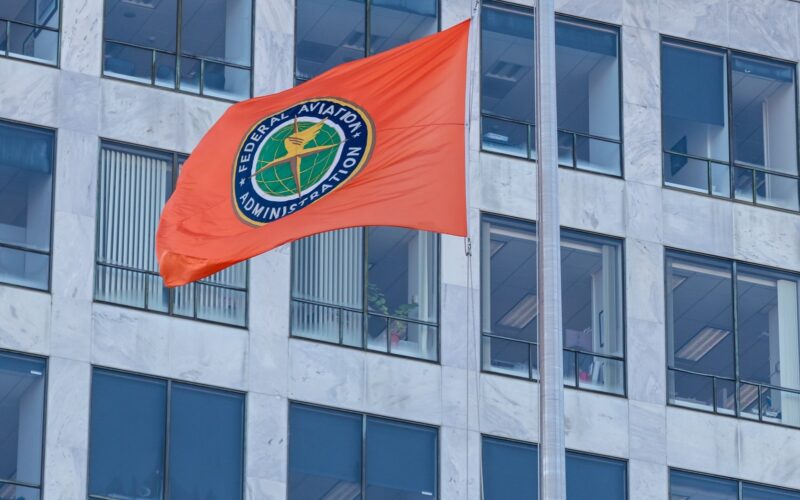Following several near-miss incidents throughout 2023, the United States (US) Federal Aviation Administration (FAA) organized a safety summit, where more than 200 safety leaders from the aviation industry convened to discuss how to improve the situation.
The summit, which occurred on March 15, 2023, was held following several high-profile incidents across the US. It started with a runway incursion at John F. Kennedy International Airport (JFK), involving an American Airlines Boeing 777 and a Delta Air Lines Boeing 737, on January 13, 2023. On February 4, 2023, a FedEx Boeing 767F almost landed atop a Southwest Airlines Boeing 737 at Austin International Airport (AUS).
On February 12, 2023, The Air Current Reported that a United Airlines Boeing 777 lost more than 1,000 feet of altitude upon take off from Kahului Airport (OGG), Kahului, Hawaii. Meanwhile, runway-related incidents continued, with an American Airlines Boeing 737 landing at Sarasota-Bradenton International Airport (SRQ) on the same runway as Air Canada Rouge was departing from on February 16, 2023, while on February 27, 2023, a JetBlue Embraer E190 was forced to take action at Boston Logan International Airport (BOS) to avoid a Learjet 60 private jet on the runway.
Lastly, on March 7, 2023, an American Airlines Embraer E175 taxied onto an active runway used by a United Airlines Airbus A319.
Focusing on recent safety incidents
While no injuries were sustained in any of these incidents, the FAA’s acting administrator Billy Nolen called the summit to “focus the industry following a string of recent safety incidents, several of which involved airplanes coming too close together during takeoff or landing”.
Per the FAA’s summary of the summit, four different industry groups discussed commercial operations, the air traffic system, airport and ground operations, and general aviation operations, looking for “ways to address areas where the existing safety system could be tightened to prevent future occurrences”.
The commercial operations group discussed more efficient safety information sharing in real-time, setting a new goal of eliminating serious incidents such as runway incursions and close calls, refining the data collected by the Aviation Information Analysis and Sharing (ASIAS), and incorporating human factors into risk factors due to pilots and flight attendants providing feedback of stress and long working hours under adverse conditions.
Air traffic system concerns were also addressed, with calls to re-examine runway incursion data and a plea to help the FAA identify technologies “that could augment existing capabilities of surface surveillance equipment and deploy this technology to all airports with air traffic control services”. The airport and ground operations group focused on workforce experience and attrition and the effective implementation of Safety Management Systems (SMS) across commercial airports in the US.
The FAA’s general aviation group looked into ways to reduce fatal accidents in this area of aviation and various safety-related topics.
Questioning the system
In his opening remarks, Nolen noted that the industry must pay attention and ask itself what the system has been trying to tell stakeholders in aviation.
“When I called this gathering a few weeks ago, it was because we had seen an uptick in incidents across the aviation system,” stated the FAA’s acting administrator. Nolen continued that “as a safety community, we must pay attention to the events of recent months. What is the system trying to tell us?”
“As I mentioned in my call to action, the biggest mistake we can make as an industry is to become complacent. As a safety professional, if you are comfortable, it means you’re probably missing something,” Nolen added.
The Chairwoman of the National Transportation Safety Board (NTSB), the investigative body of various transportation-related accidents in the US, Jennifer Homendy also joined the summit, indicating that while the “US has a lot to be proud of,” the industry must not “take this for granted”. Furthermore, even if there has not been an airline passenger fatality since the Colgan Air crash in February 2009, “the absence of a fatality or an accident doesn’t mean the presence of safety,” Homendy noted.
Homendy mentioned that six runway incursions, two wrong-runway landings, and two significant events in Hawaii, including the sudden loss of altitude of a United Airlines Boeing 777, are currently being investigated by the NTSB.
“The NTSB has 7 recommendations on runway collisions that haven’t been acted on. One of those is from 23 years ago,” Homendy stated, noting that the board sometimes hears a response that the implementation of these recommendations is “too expensive”. Homendy rhetorically asked whether the lives of loved ones “really have a price tag?”
Homendy said that from all six runway incursions in 2023, all flights’ Cockpit Voice Recorders (CVR) were overwritten, as they only record two hours of audio. “Twenty-five-hour CVRs don’t just help all of us learn from accidents and incidents; they can help operators improve safety and prevent future accidents,” she continued.
“The fact is, Europe has mandated 25-hour recorders on new aircraft for over a year. We should do the same. And we should retrofit certain in-service aircraft with 25-hour CVRs. Both are NTSB recommendations from 2018; both remain open. That means no action,” Homendy concluded, adding that “addressing these and so many other issues is how we make our skies safer today”.

